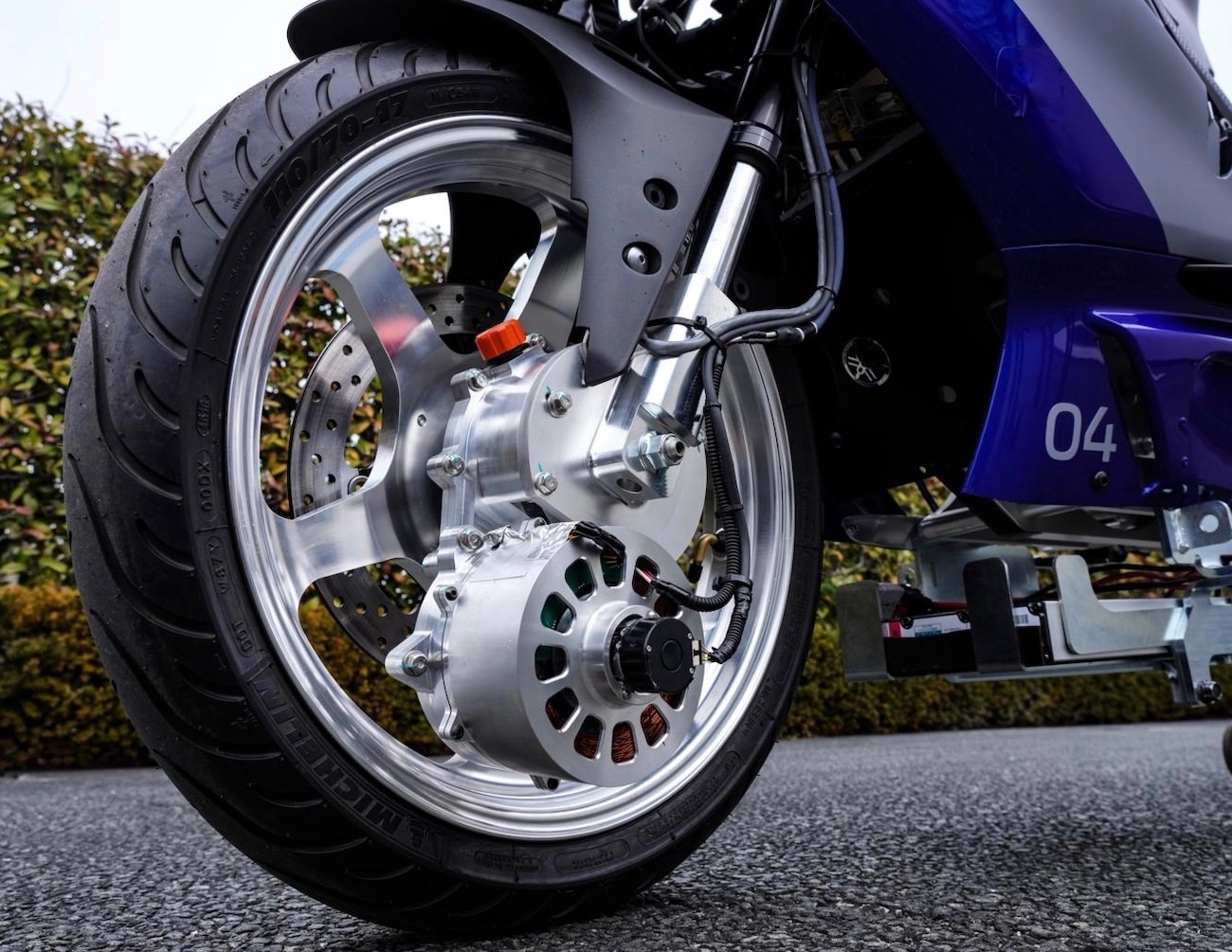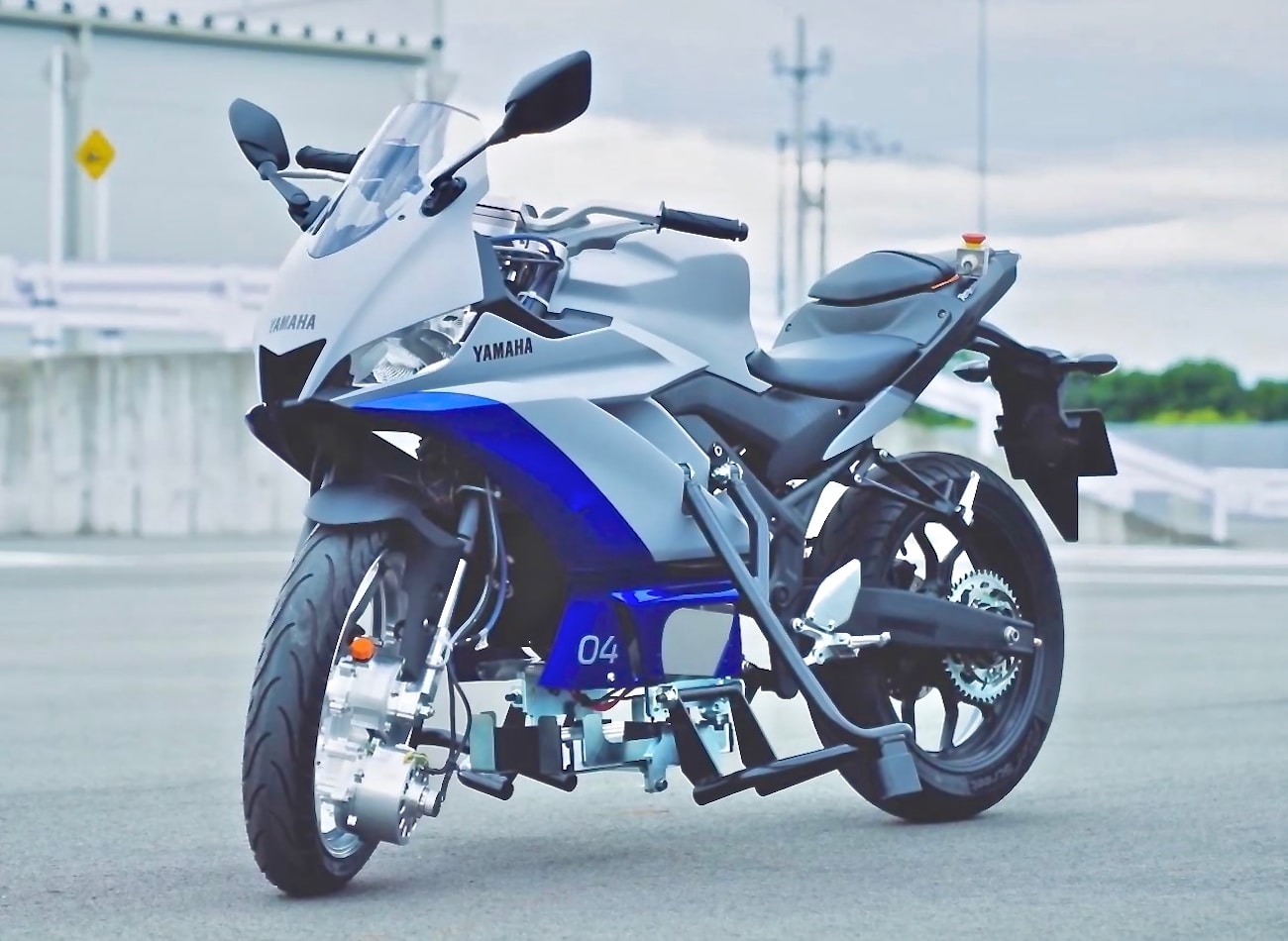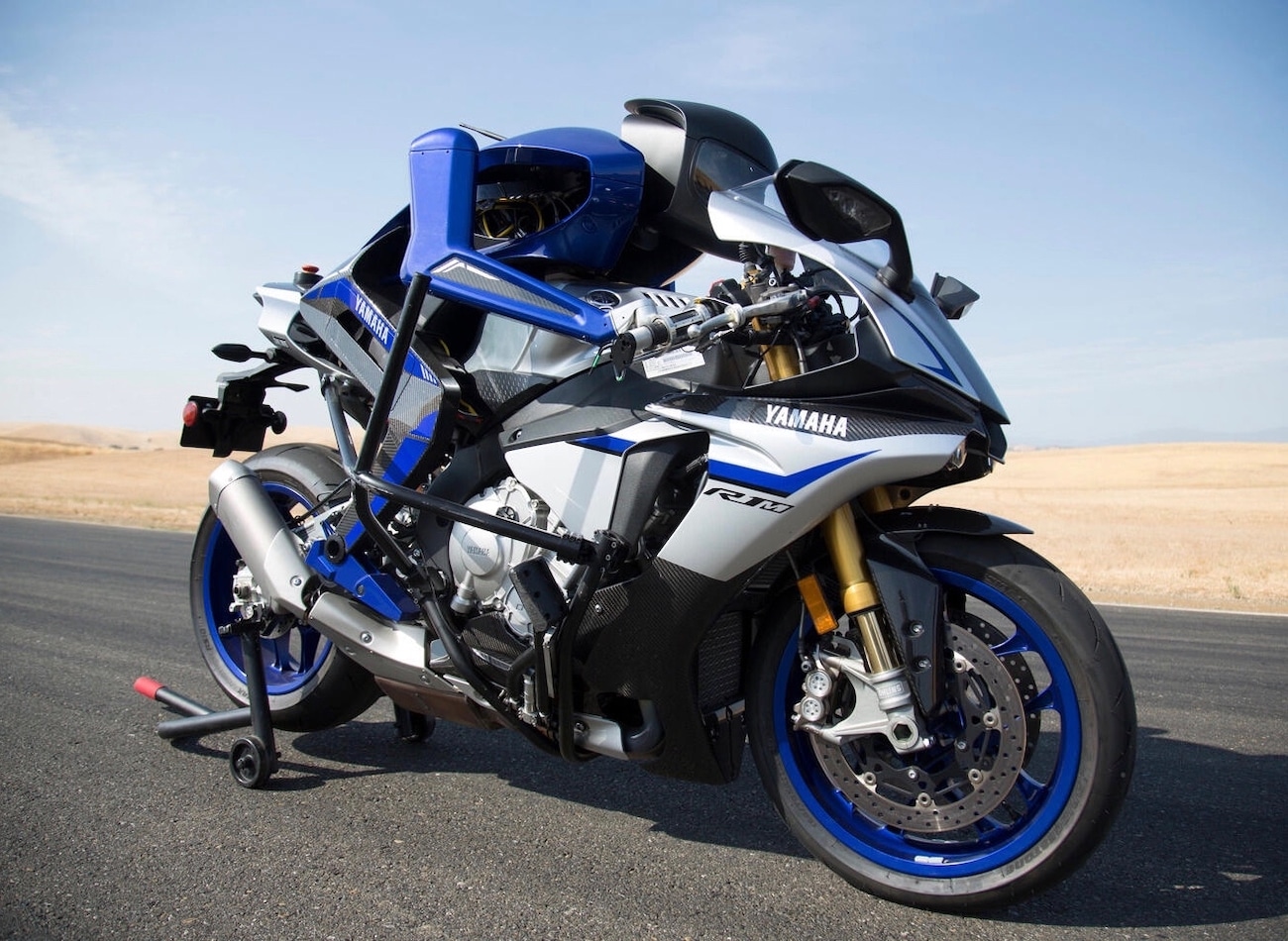FUTURE TECH? SEE YAMAHA’S SELF-BALANCING AMSAS STABILITY TECHNOLOGY
 Obviously overbuilt, Yamaha’s next step is to downsize the AMSAS’s self balancing technology.
Obviously overbuilt, Yamaha’s next step is to downsize the AMSAS’s self balancing technology.
Yamaha’s studies reveal that most motorcycle accidents can be attributed to recognition errors (10%), decision errors (17%) and operation errors (5%) on the part of the rider. Data also showed that approximately 70% of motorcycle accidents occur within two seconds after making a riding error. Based on these numbers, Yamaha has developed technology to improve danger predictions, prevent damage and improve defensive riding. In short, the device aims to reduce low-speed tip-overs on street bikes, adventure bikes ad dual sport bikes. There are no application plans for off-road or motocross use, but it is interesting tech that could be expanded into adventure bikes once it is shrunk down in the future.
 The AMAS prototype is being tested on a YZF-R25 street bike. Although focused on low-speed handling, especially starting and stopping, the AMSAS works to enhance the overall stability of the bike.
The AMAS prototype is being tested on a YZF-R25 street bike. Although focused on low-speed handling, especially starting and stopping, the AMSAS works to enhance the overall stability of the bike.
Yamaha’s Advanced Motorcycle Stabilization Assist system (AMSAS) stabilizes a vehicle’s attitude at low speeds by controlling drive forces and steering forces without requiring modification to the frame. The prototype is under development on a YZF-R25 street bike. Although focuses on low-speed handling, especially starting and stopping, the AMSAS works to enhance the stability of the bike. The drive actuator, fitted to the front wheel, aids with stability, and the steering actuator, attached to the handlebars, over above walking speed. Through the coordination of the two, the mid-development AMSAS prototype bike can move at walking speeds without falling over, regardless of the skill level of the rider aboard.
 Yamaha used information learned during its MotoBot autonomous motorcycle-riding humanoid robot as a test of self-balancing technology.
Yamaha used information learned during its MotoBot autonomous motorcycle-riding humanoid robot as a test of self-balancing technology.
The self-balancing mechanism relies on a six-axis Inertial Measurement Unit (IMU) along with drive and steering actuators. At low speeds, the actuators keep the motorcycle upright thanks to inputs from the IMU. In short, the device aims to reduce low-speed tip-overs, by keep the bike balanced (without rider input).
According to Yamaha Safety Strategist Jun Sakamoto, AMSAS provides an assist when the bike is more unstable and requires skill to operate. Yamaha will be working to downscale the size of the various components and develop it into a platform not just for motorcycles, but one also adaptable to a wide range of other personal mobility applications, like bicycles.”





Comments are closed.